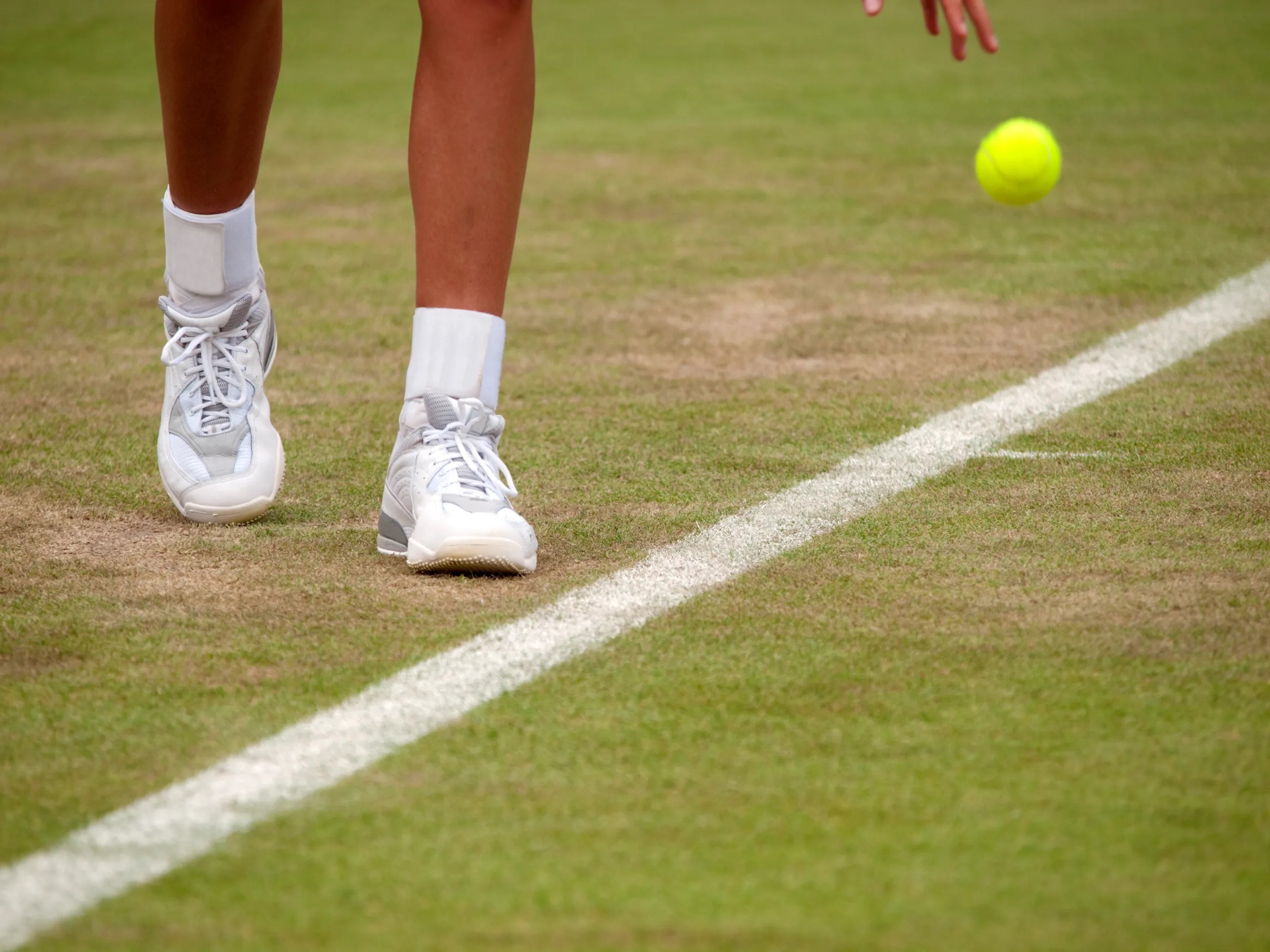
Tennis is a game that has fascinated and challenged me in equal measure my entire life as a spectator, an amateur player, and now as a father of three aspiring young players. As an individual sport that tests both physical and mental fortitude, it is gladiatorial in terms of body and mind, epitomised by many an epic Wimbledon five-set thriller. A fairly simple physical setting, equipment, and set of rules belies an incredibly complex mental struggle to constantly balance risk and reward, and to deal with disappointment.
Despite winning 20 grand slams and 103 titles in one of the most successful tennis careers, Roger Federer lost 46% of all the points he played. The mental anguish of the sport, all too apparent in some players in this most human of sports, has inspired some of my favourite quotes: Billie Jean King’s, “Pressure is a privilege” that adorns the Arthur Ashe stadium at the US Open in New York is one that particularly resonates with me. Ultimately, I don’t think my love of tennis and my career as a portfolio manager are a coincidence. Being a successful stock picker requires dealing with a lot of disappointment, volatility and pressure to achieve better financial outcomes and a brighter future for our clients ─ to be entrusted with that pressure is indeed a privilege.
Tech adoption at even the most traditional of sporting venues
2025 marks a historic change for the Wimbledon Championships. For the first time in 147 years human line judges will be replaced by electronic line calling (ELC) technology. This is the latest evolution of Wimbledon adopting new technology. Like many technology adoption curves, the rate of change is exponential as for the first 130 years of the championships, hardly any technology was used. The introduction of Hawk-Eye in 2007 provided oversight to the 300-plus line judges that helped officiate. 18 years later, even at the most traditional of venues, we are now at the point of technology completely replacing a role with a storied history stretching back well over a century. While this is part of a wider technological revolution in the sport of tennis, it also provides insights into the wider debate around the AI revolution, and the risk of replacing many human jobs.
The precision of tennis and the ability of the very best to literally ‘paint the lines’ with shots has led to iconic puffs of Wimbledon chalk dust, to John McEnroe’s infamous, “You cannot be serious!” rant. The perceived injustice of incorrect line calls and human error has long led to demands for technology to be introduced. But it was only at the 2007 Australian Open that Hawk-Eye was first introduced in grand slams.
The pandemic was a major catalyst for technology adoption, tennis included. The 2020 US Open was the first grand slam to adopt Electronic Line Calling (ELC). Wimbledon has now followed, leaving only the French Open left with human line judges.

Technology can alter human behaviour
The statistical nature of tennis, the black-and-white nature of line calls, with technology and humans performing the same task over many years, across millions of shots, provides a swathe of data to analyse the impact of technology on human performance and productivity. David Almog, a behavioural economist at Northwestern University, analysed nearly 100,000 points in 700 matches globally before and after the Hawk-Eye ball tracking system was introduced on tour in 2006. His paper published last year provided some interesting insights into how humans interact with a new technology in their jobs.1
Almog found that Hawk-Eye oversight drove human officials to up their game and make 8% fewer mistakes than before the technology was introduced. Interestingly, however, in one area, human accuracy deteriorated significantly: serves landing 20mm either side of the line. Prior to Hawk-Eye’s introduction, human line judges were more likely to call a serve out when it was in, but post Hawk-Eye they were much less likely to call serves out by a statistically significant degree. For every 100 mis-hit serves, 26 were left unchallenged prior to introduction, but that soared to 39 when Hawk-Eye was used. Almog’s hypothesis was that human behaviour shifts in the face of new technology. Letting serves through reduced the risk of calling a legitimate serve out, which creates reputational risk and potential dissent from players, or the crowd. Knowing that technology was there as a safety net radically altered the behaviour of human line judges and how they performed their job.
We have witnessed a similar phenomenon with the introduction of the Video Assistant Referee (VAR) in football, which has led to much controversy in terms of the interpretation of rules, the impact it has had on human referees and the spectacle of the game itself. Tennis has a much simpler set of rules but in recent months the sport has had two instances of top players questioning the technology, and using their smartphones to take photos of the ball marks to preserve evidence of the perceived injustice. Both players received code violations for unsportsmanlike behaviour.
AI is your partner not your opponent
In the world of sport, the debate around the introduction of technology can be passionate, but ultimately is less impactful to our everyday lives. However, AI algorithms are being used in ever more areas. They are, and will, have much more profound influences on how we work and what work we do. Workflows will need to be reimagined in an AI world, along with the resultant legal and regulatory responsibilities. We have already seen challenges to AI algorithms being used in recruitment or in autonomous vehicles. But as AI usage proliferates in many white-collar industries such as law and medicine, rather than just sport, we move into the realm of real life and ultimately, in extreme cases, actual – rather than proverbial – life and death. The recent EU AI Act is an initial attempt to encompass some of these new algorithmic challenges into regulation, while in California attempts to pass an AI Safety Bill have proved contentious and ultimately unsuccessful.
So while we watch another magical Wimbledon Championships and cheer on the players, some of whom will again be sponsored by Janus Henderson this year, take a moment to think about the changes technology is driving in the sport, and what we can learn to better understand how humans will partner with AI in the years ahead.
Advantage: active management
From an investment perspective, understanding this radical technological inflection, the companies that are best placed to adapt to these changes and are implementing the right strategies are key to identifying the leaders of the AI era ─ which we expect to also dominate the stock market. It is our responsibility as stewards of investors’ capital to engage with these companies in this journey to help them develop this technology responsibly and to navigate the inevitable regulatory challenges. Ultimately, we view AI as a solution to the world’s demographics challenges, notably an ageing population, a shrinking workforce, enhancing productivity as well as the value of jobs. We see this as akin to the introduction of ATMs in the banking industry in the 1960s, but that does not preclude niche areas of major job displacement…line judges being a case in point.
Now enjoy the tennis!

1 The Economist.com, 15 February 2025. What tennis reveals about AI’s impact on human behaviour.
These are the views of the author at the time of publication and may differ from the views of other individuals/teams at Janus Henderson Investors. References made to individual securities do not constitute a recommendation to buy, sell or hold any security, investment strategy or market sector, and should not be assumed to be profitable. Janus Henderson Investors, its affiliated advisor, or its employees, may have a position in the securities mentioned.
Past performance does not predict future returns. The value of an investment and the income from it can fall as well as rise and you may not get back the amount originally invested.
The information in this article does not qualify as an investment recommendation.
There is no guarantee that past trends will continue, or forecasts will be realised.
Marketing Communication.